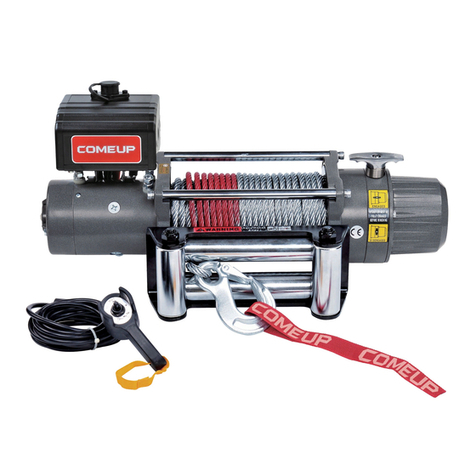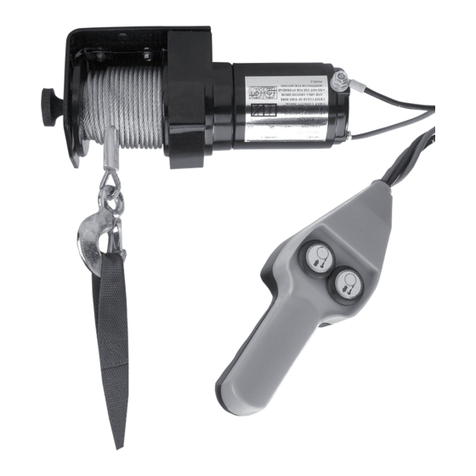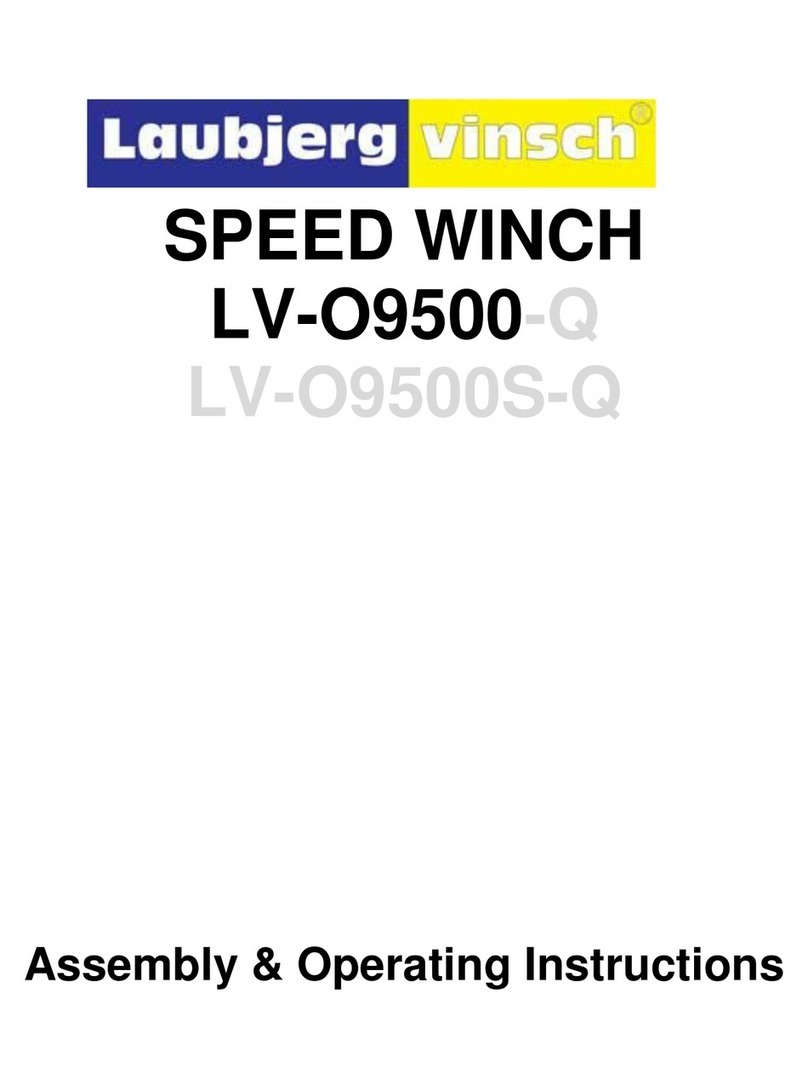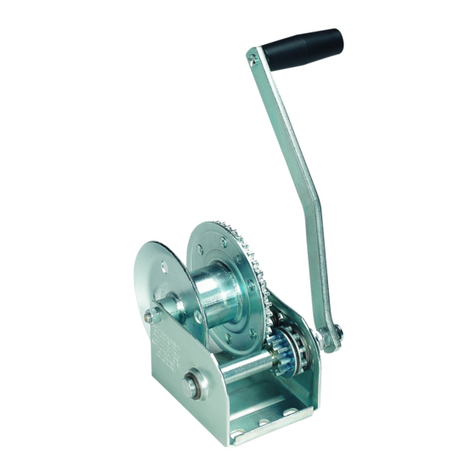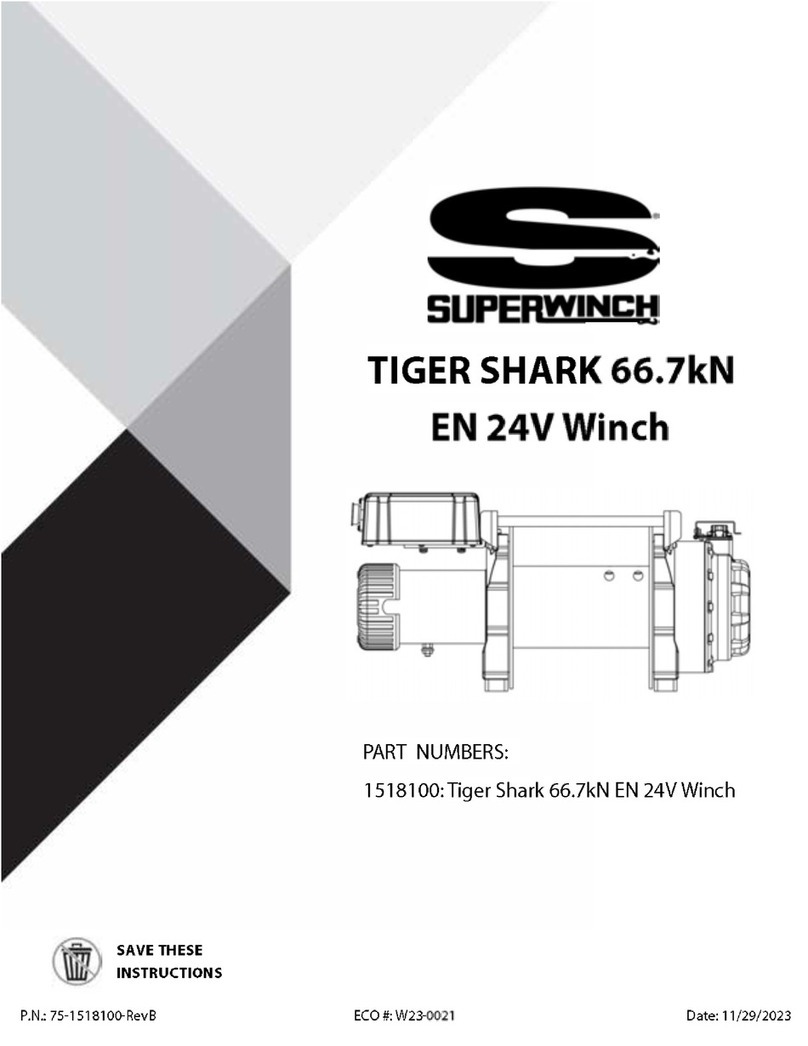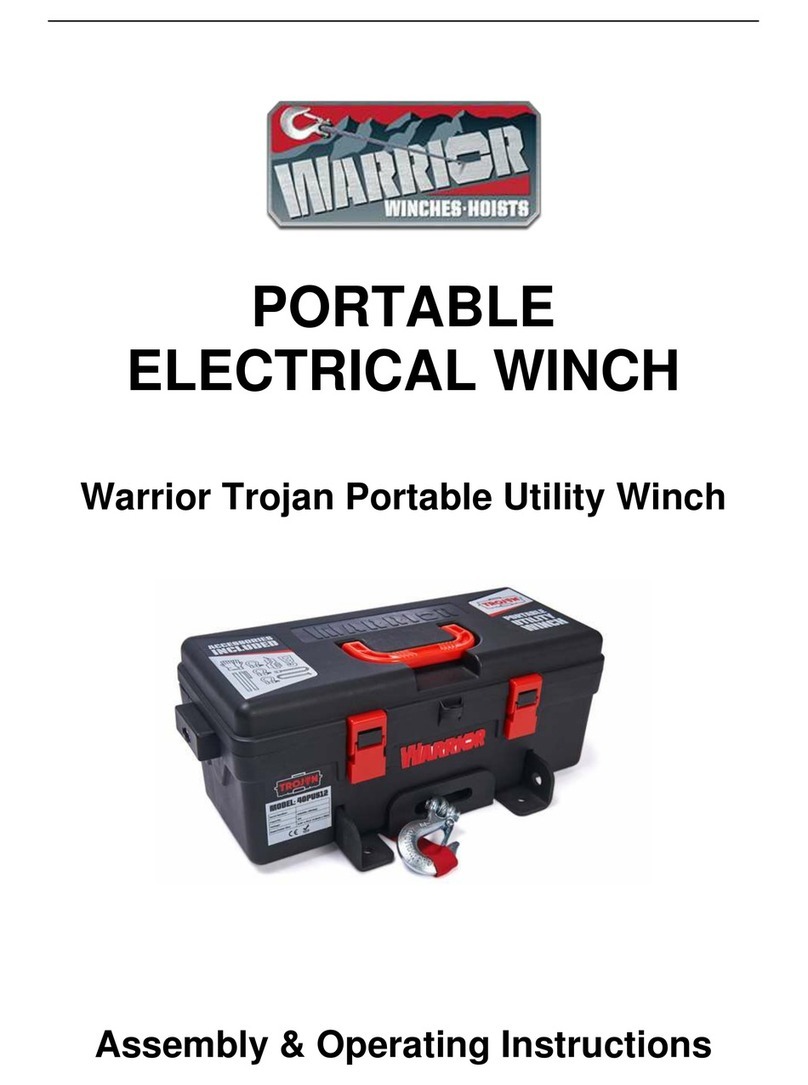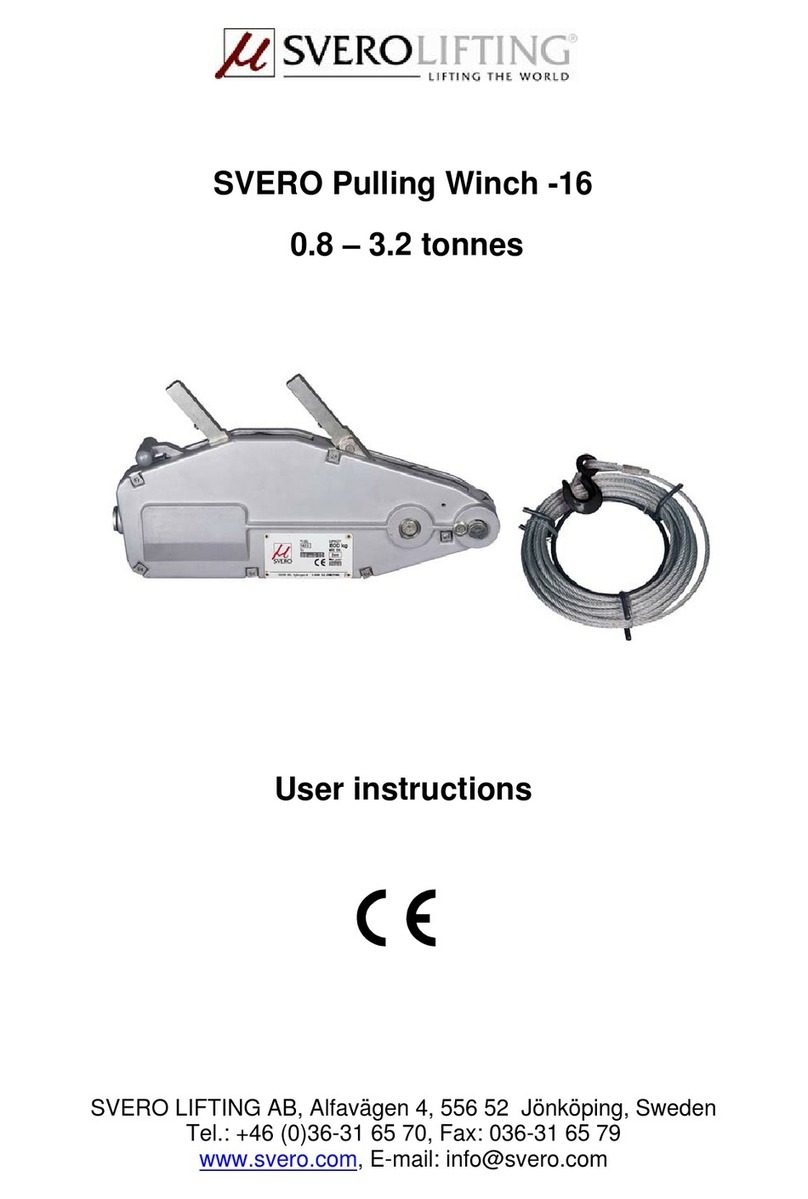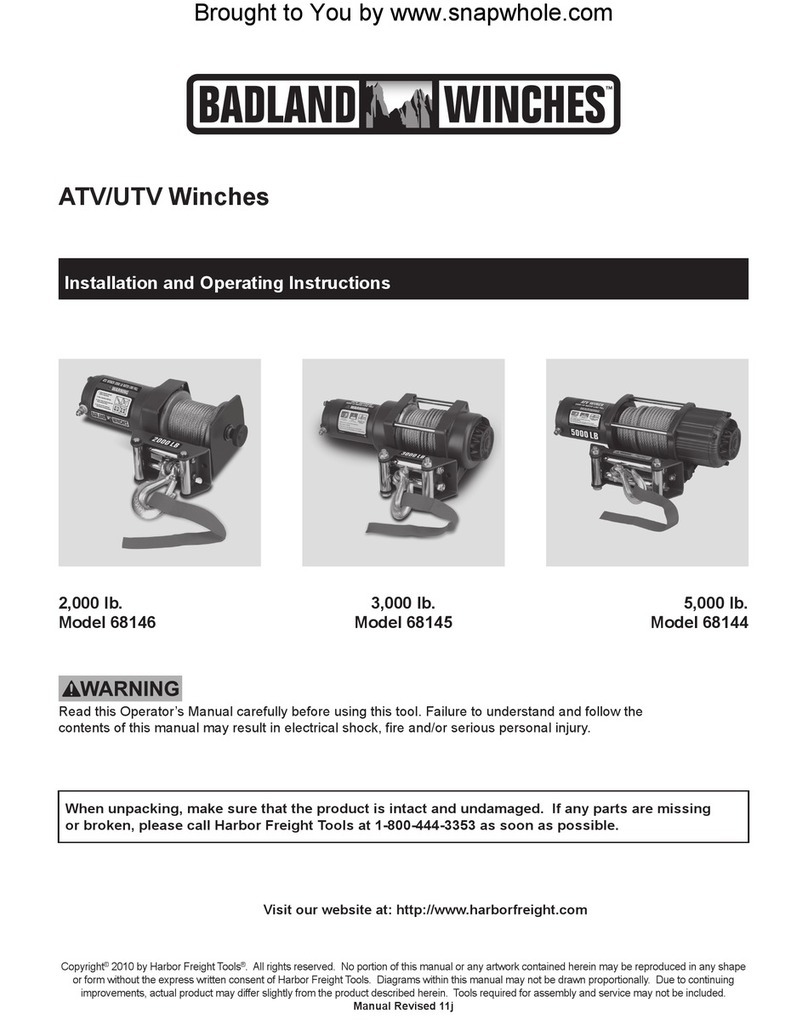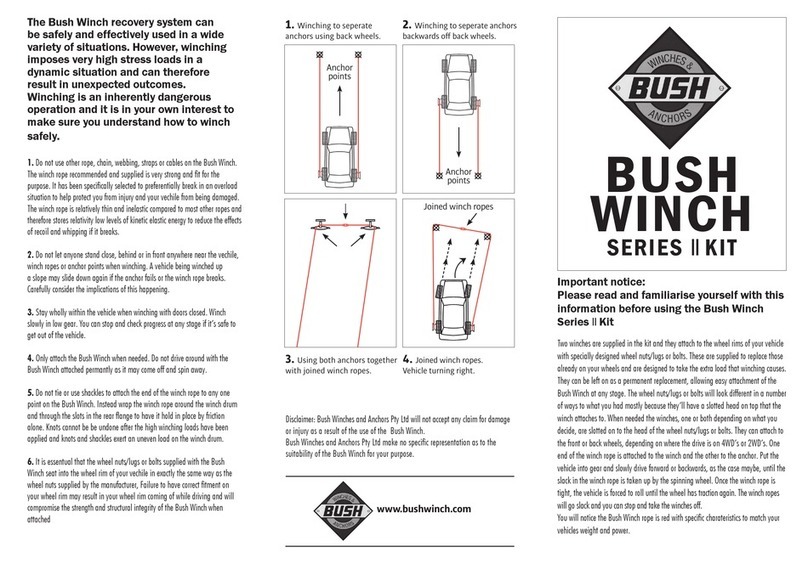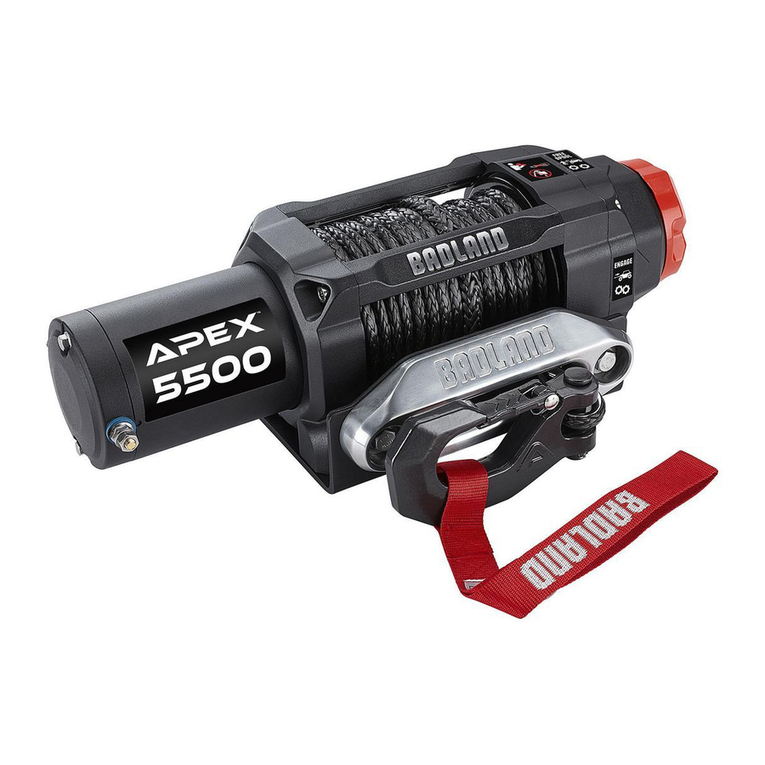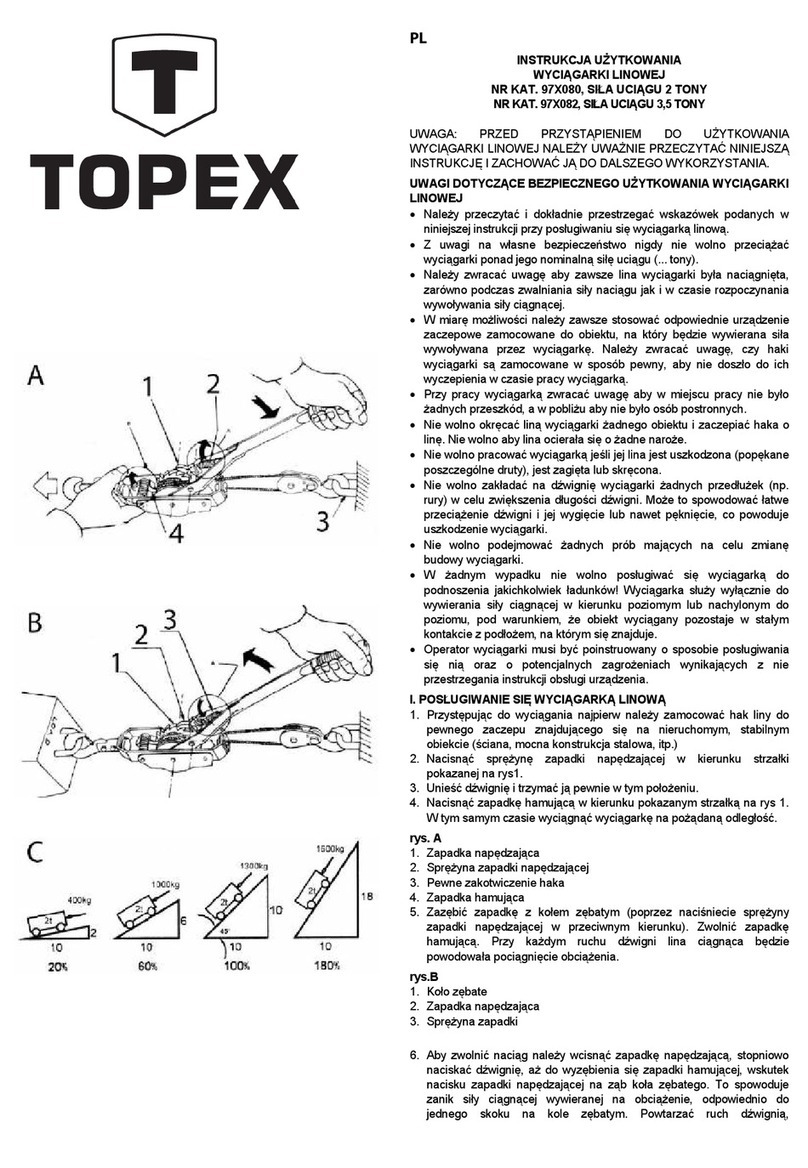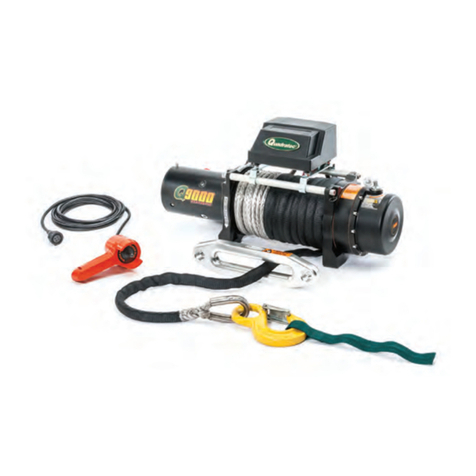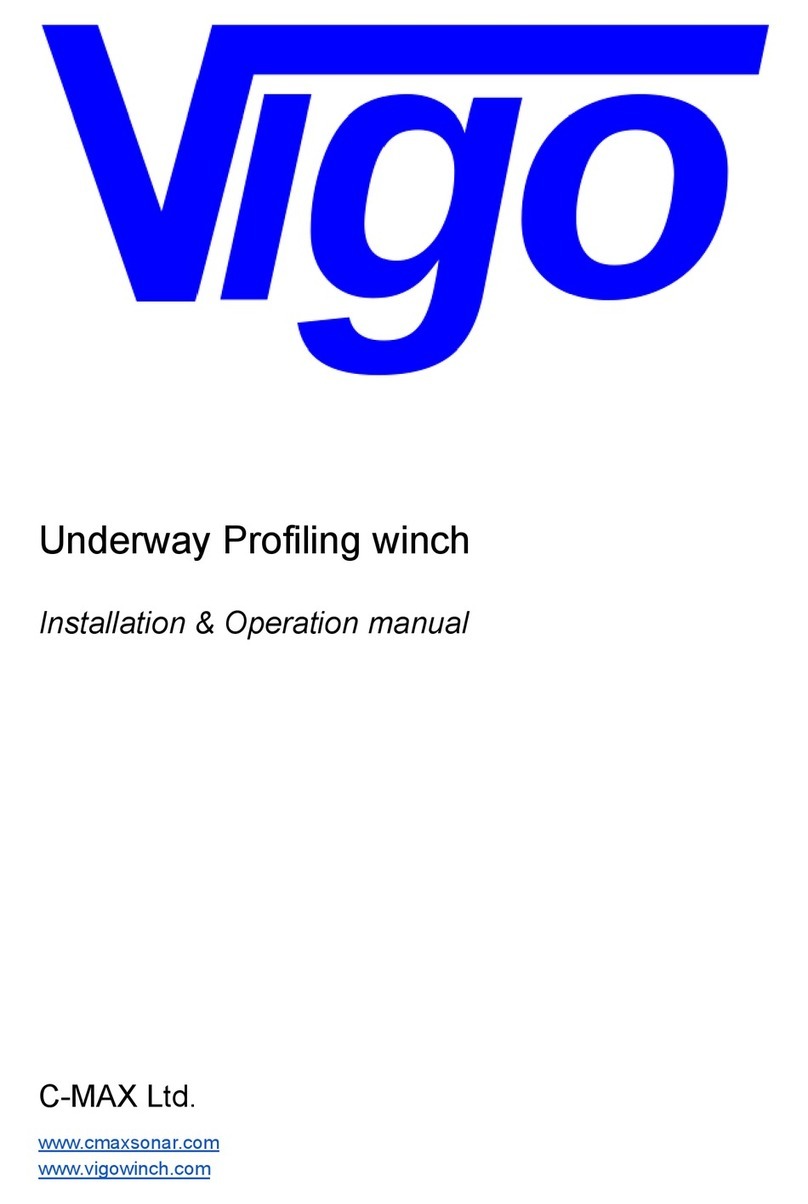
7
p. The vehicle to be winched should be placed in neutral and the emergency brake
released. Only release the brake pedal when under full tension. Avoid shock loads to
the winch. This can damage the winch, rope and vehicle.
q. The winch is meant for intermittent use. Under full load with a single line rig do not
power in for more than a minute without letting the motor cool down for a few minutes
and then resume the winching operation.
r. The winching operation is complete once the vehicle is on stable ground and is able
to drive under its own power.
s. Secure the vehicle. Be sure to set the brakes and place the vehicle in park.
t. Release the tension on the wire rope. The winch is not meant to hold the vehicle for
long periods of time.
u. Disconnect the wire rope from the anchor.
v. Rewind the wire rope. Make sure that any wire already on the drum has spooled
tightly and neatly. If not, draw out the wire and re-spool from the point where the rope
is tight.
w. Keep your hands clear of the winch drum and fairlead as the wire rope is being
drawn in.
x. Secure the hook and hook strap.
y. Disconnect the remote control and store in a clean, dry place.
z. Clean and inspect connections and mounting hardware for next winching operation.
WINCH ASSEMBLY AND MOUNTING
1. Your winch is designed with a bolt pattern that is standard in this class of
winch. Many winch mounting kits are available that utilize this bolt pattern for
the popular ATV’s and mounting channels. If you will utilize the mounting
channel you must ensure that it is mounted on a flat surface so that the three
major sections (motor, drum and gear housing) are properly aligned. Proper
alignment of the winch will allow even distribution of the full rated load.
2. Start by connecting the roller fairlead (Part# X0200600) to the mounting
channel (Part# X0200019) using 2 each of the cap screw M8 X 20 (Part#
X0200023), flat washer (Part# X0200021), lock washer (Part# X0200020) and
securing with Nut M8 (Part# X0200019) (Make sure the screw is placed
through the mounting channel and roller fairlead from inside the channel. This
